McMurdo Sound
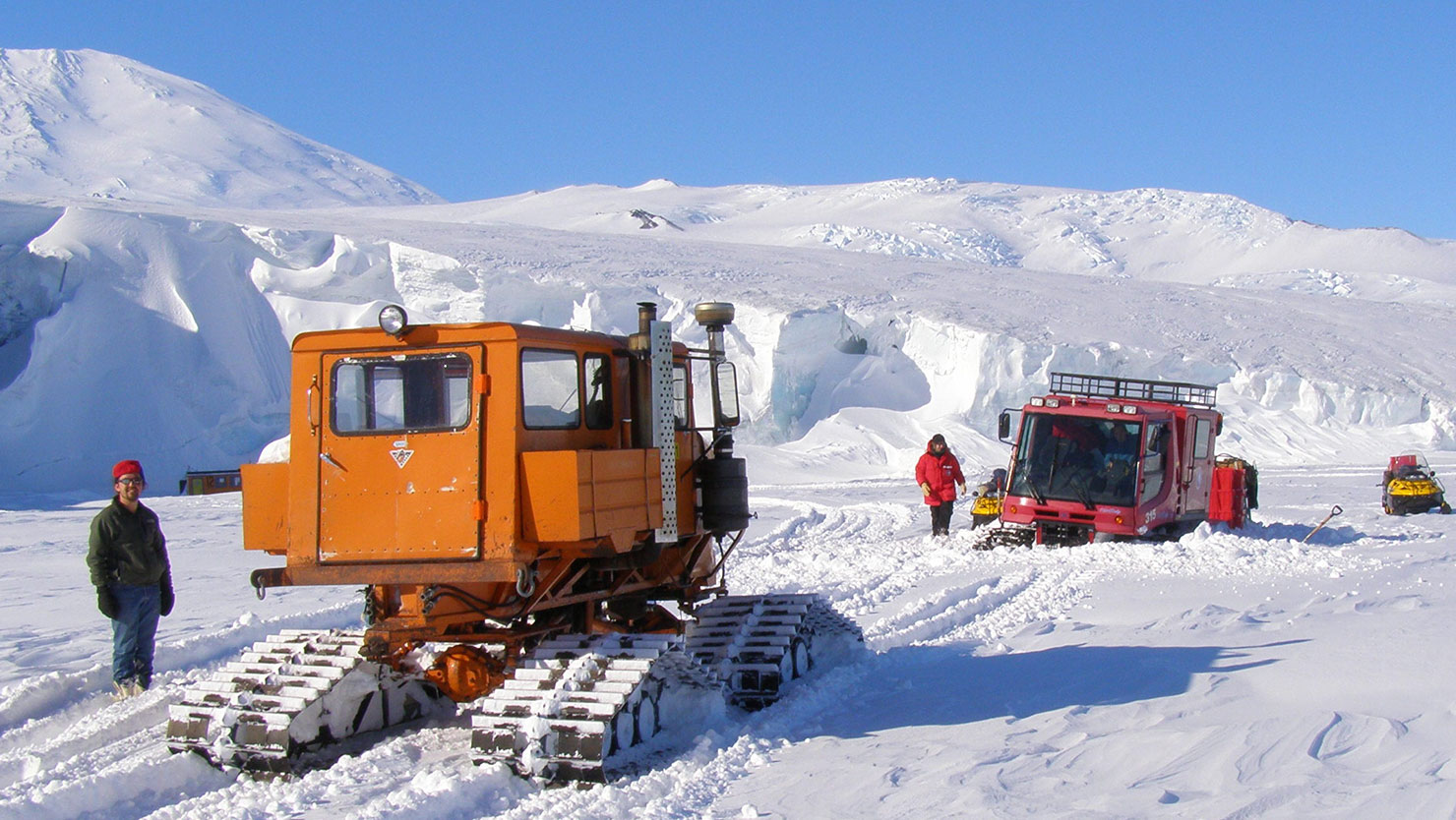
It took another day for the storm to blow itself out, but by Tuesday the wind and driving snow had abated, and we drove our Pisten Bully back out to our temporary shelter near Cape Evans. It took several hours of digging to clear the snow away from our vehicles, but once we started driving away from the hut we quickly ran into another problem: the snow was so
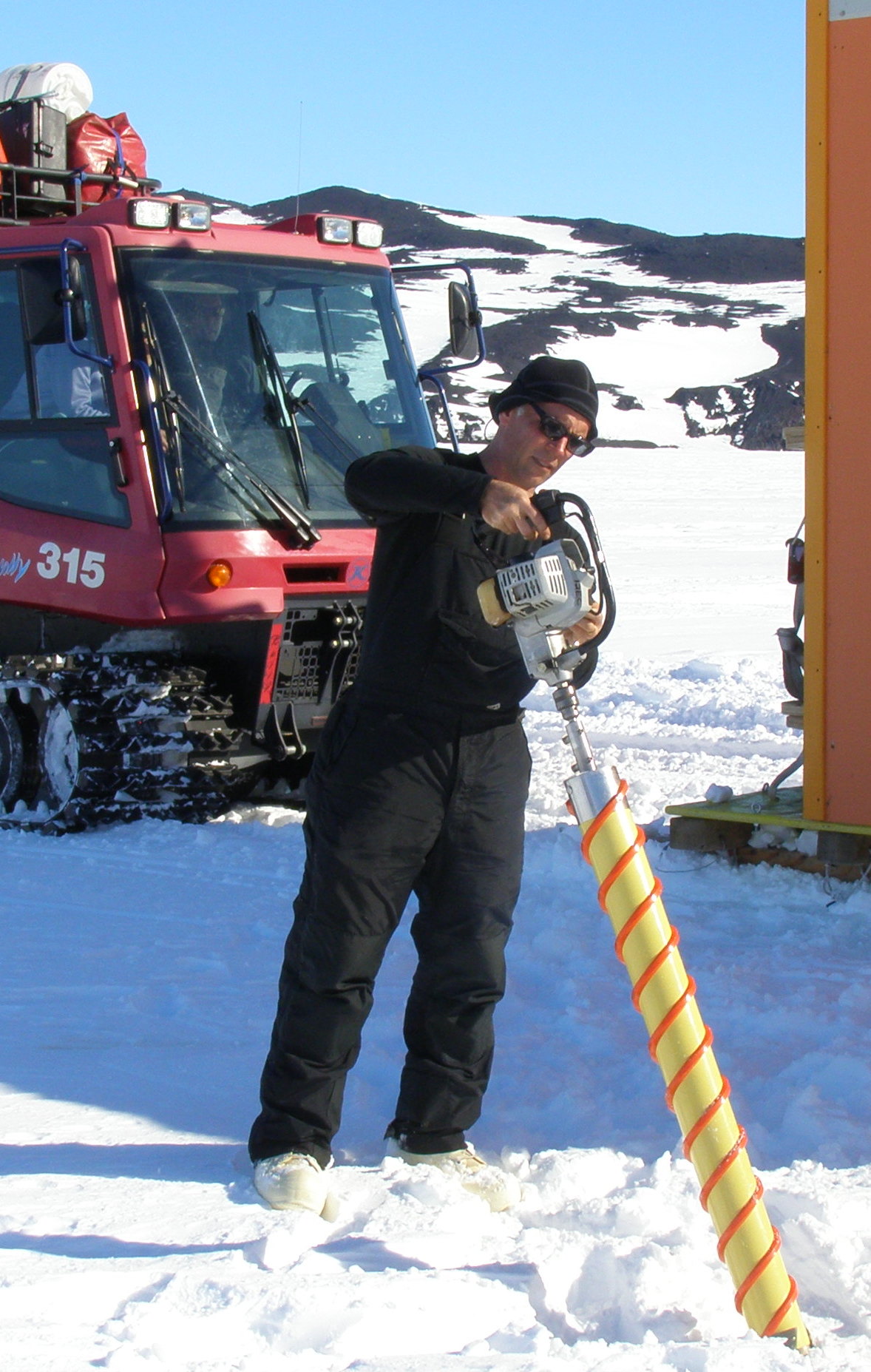
deep that our sleds and vehicles would bog down in the snowdrifts. Often we would pull out the Pisten Bully, only to have the Sno-Cat get stuck and have to dig that out. An entire day went by digging vehicles out of the snow, and in the process we broke our sled hitch and winch. Eventually we were able to drag our research sled to suitable location for obtaining a sample of plankton, and we set up camp.
We first tested the ice thickness at our sample site using a standard ice drill – we needed three drill extensions, or drill flights, to get to the bottom of the sea ice, which meant using an awkward 100 inch drill. The ice were we were stationed turned out to be 78 inches thick. We then used a Kovacs Mark II coring drill to obtain a 4 inch diameter core of ice. The sea ice is remarkably consistent, until you approach the bottom layer, where diatoms and other phytoplankton have entrained themselves in the ice. By keeping to the
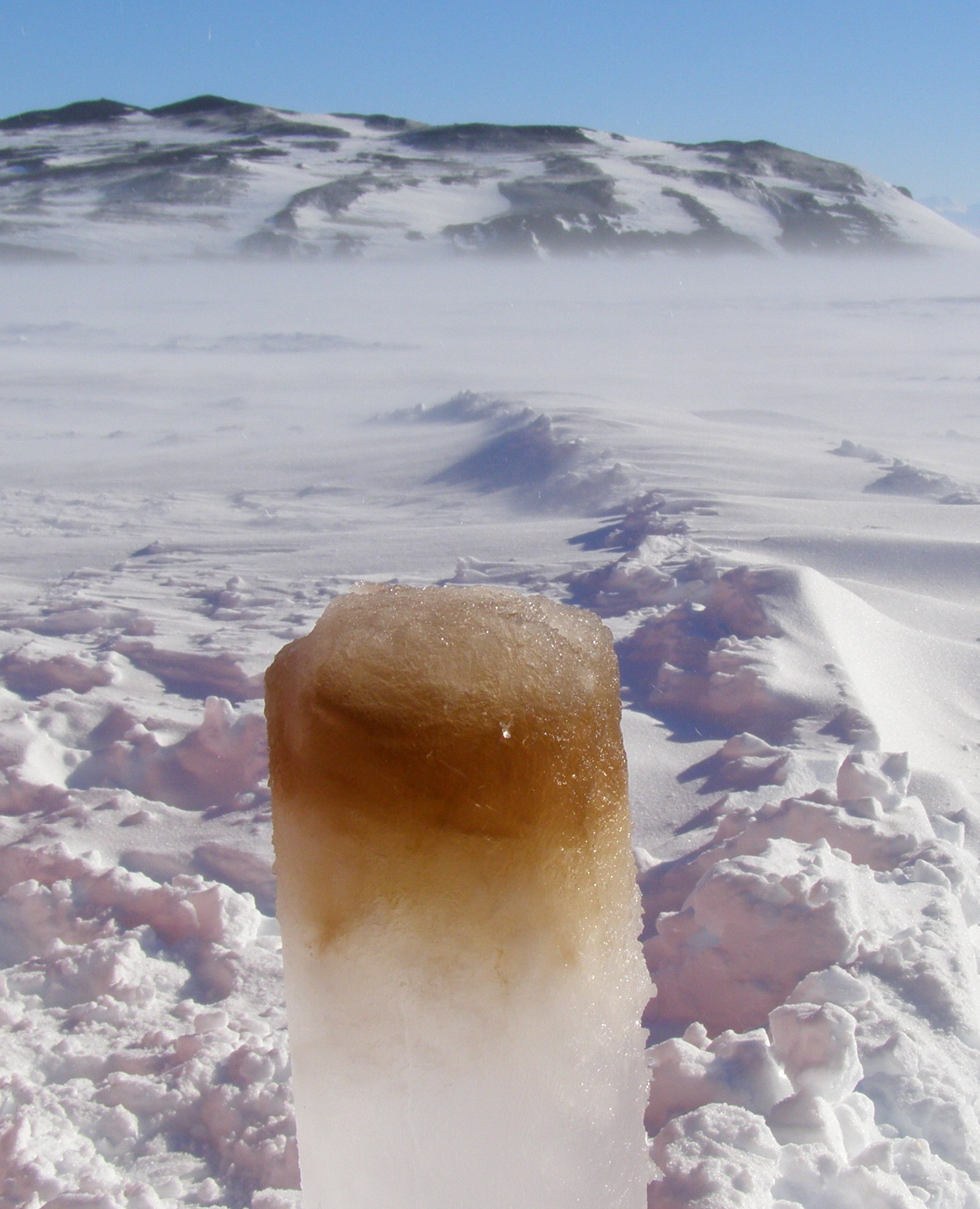
underside of the ice, microscopic plankton are the first organisms to intercept light as it enters the ocean, but the plankton are still close enough to the unfrozen seawater to obtain dissolved nutrients and minerals. Living in the ice also protects the phytoplankton from grazing zooplankton like Antarctic krill. We took the core on the left, removed the brown layer containing the diatoms and other phytoplankton, and carefully preserved the cells in liquid nitrogen for sequencing at the J. Craig Venter Institute. These diatoms probably function very differently from diatoms living in the water, so sequencing their mRNA transcripts (or transcriptome) will tell us what kinds of proteins they make and how they function in a frozen environment.

Once we have a clear hole in the ice we begin pumping seawater through a series of filter discs so we can separate the plankton based on their size. Our first filter is a 200 micron pre-filter on our sample tube - this keeps us from pulling zooplankton into our filters (we are mostly interested in the primary producers, the microscopic phytoplankton). The first filter is 3.0 microns, and intercepts the large eukaryotic phytoplankton. The second filter is 0.8 microns in size, and intercepts smaller picoplankton and some prokaryotic bacteria and archaea. The last
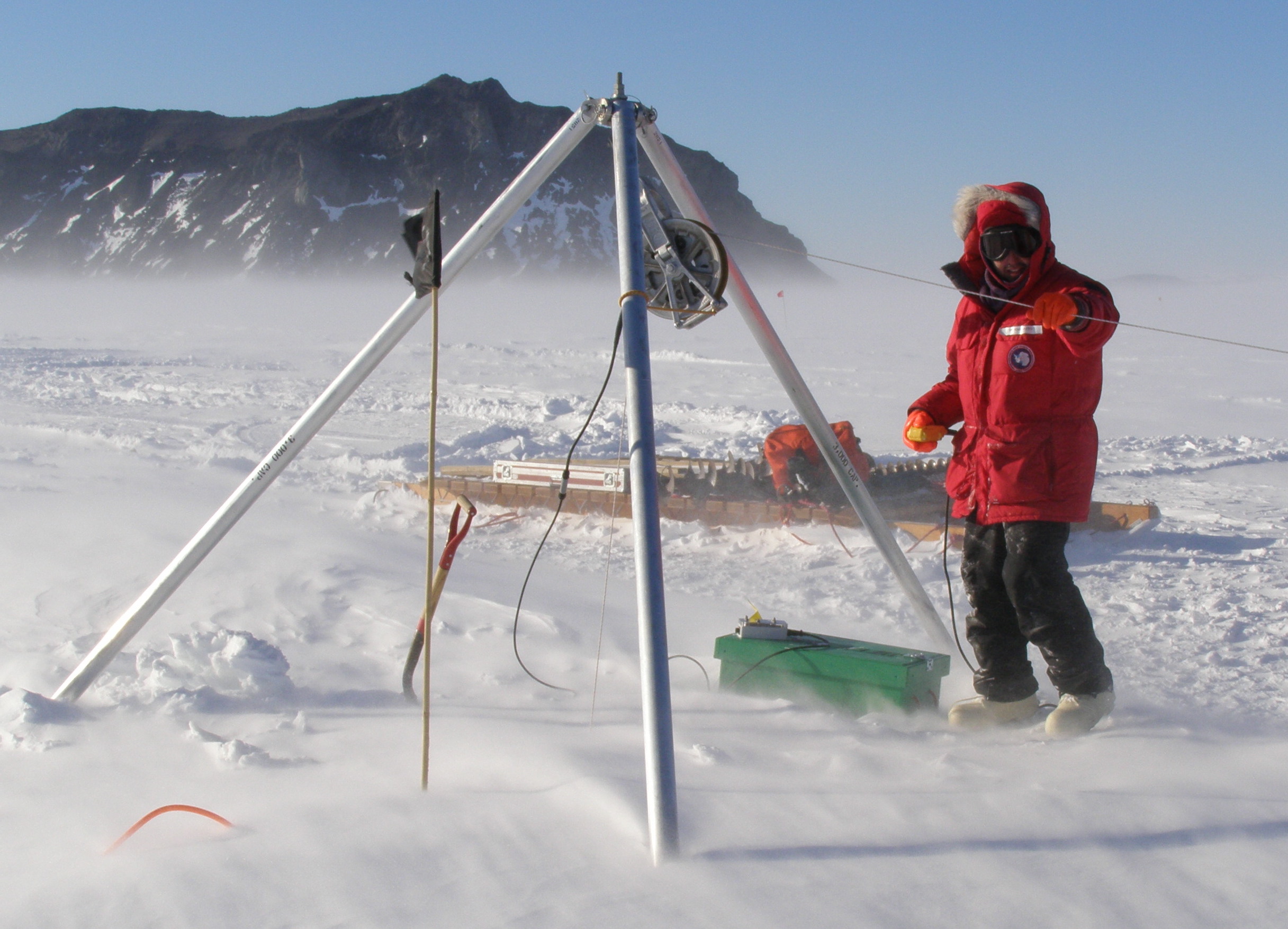
filter is the 0.1 micron filter, and the organisms entrained here are almost exclusively prokaryotes. Before the seawater is returned below the sea ice, it is passed through a 50 kilodalton tangential flow filter: this last filter will remove and concentrate marine viruses, which may have a large effect on the function of the marine food web. In Antarctica, we are passing several hundred liters of water through the filters at each station, and usually in triplicate, which can take us most of the day.
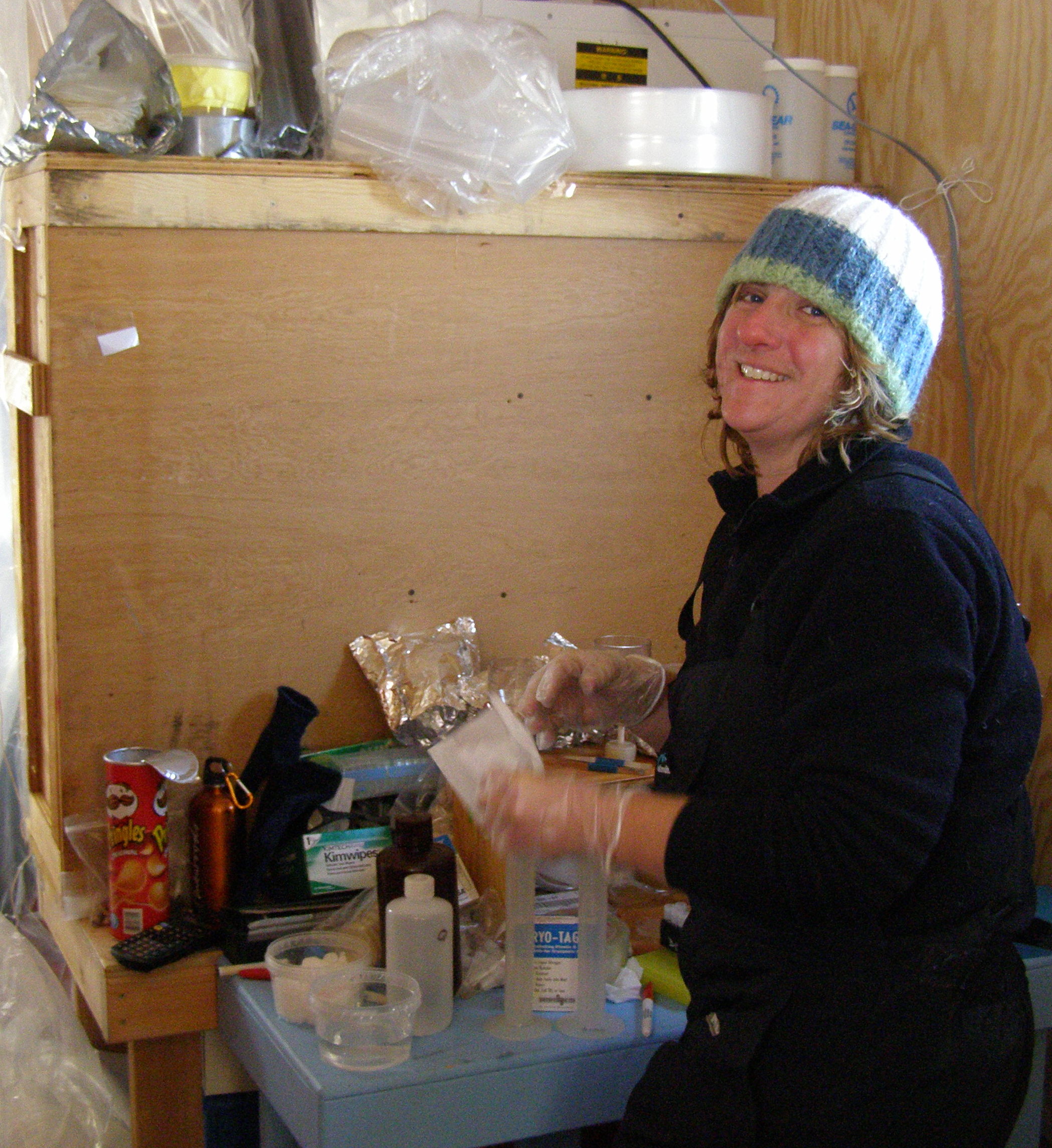
On station, our group had different tasks to do: Jeff Hoffman worked the internal pumps and filters, while I took ice cores and kept the external machinery running. Mak Saito (pictured above) used a winch to deploy nansen bottles down through the water column and collect water from discrete depths: at our particular station, the water was 182 meters deep. The water Mak collected was passed along to Dawn (on right), where some of the water was filtered for particulate carbon analysis. Dawn also worked on culturing out organisms from the various samples as they arrived. The bulk of the water from the Nansen bottles went to Abigail Noble, where
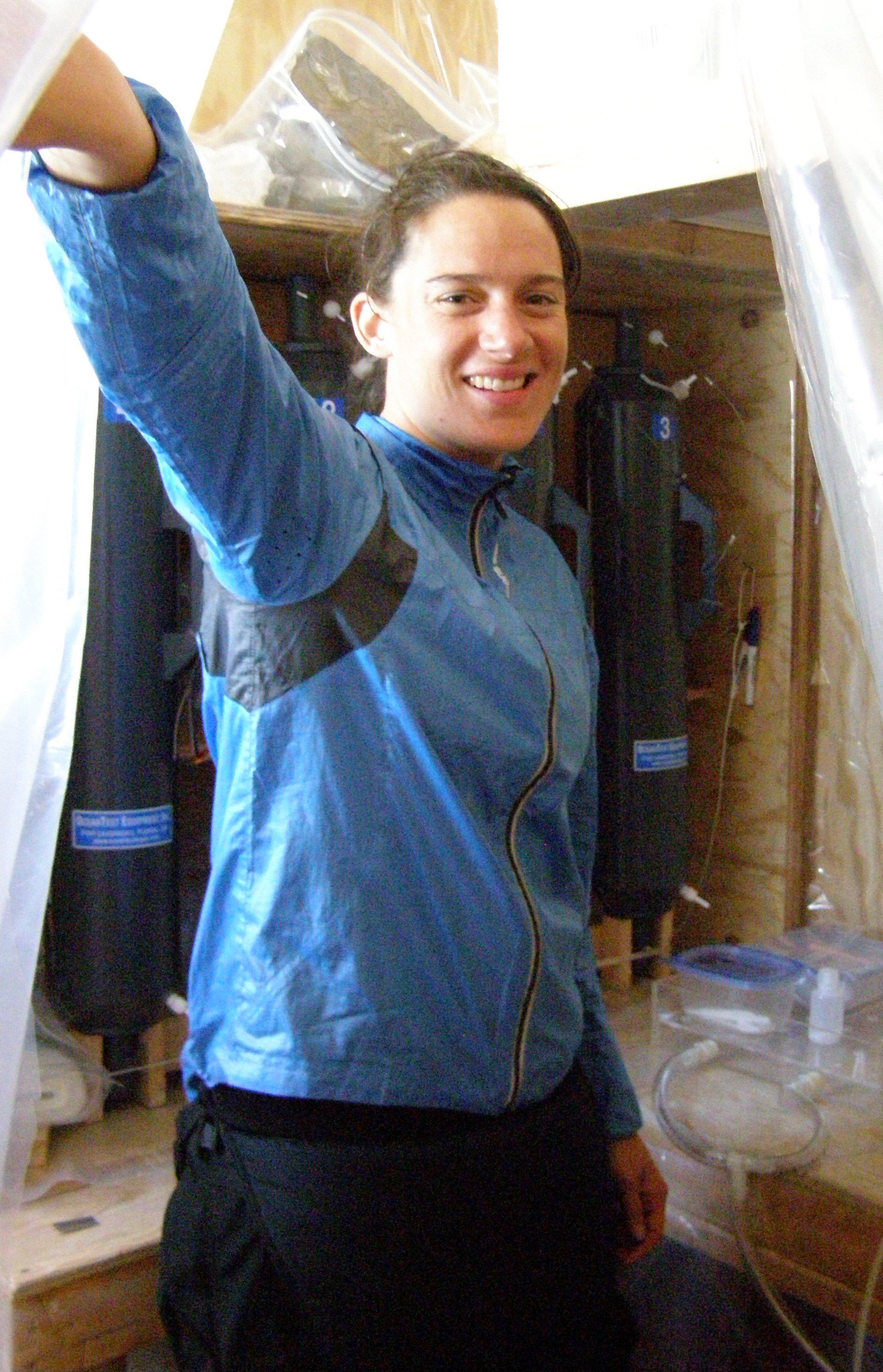
she took them into her clean room for trace metal analysis. Because dissolved metal concentrations are so low in the ocean, all analyses have to be done in a controlled clean room: even a speck of dust could potentially alter her final concentrations. Abigail had a laminar flow vent leading into a plastic bubble-wrapped enclosure, and she even wore trace-metal clean slippers while inside. It was a sophisticated operation for a sled out on the sea ice!
We worked through the evening, and by midnight we were ready to wrap up our operation and head back to McMurdo Station. Mother nature had a different idea though: as we were leaving, the winds picked up, and began gusting over 50 knots, while the blowing snow caused the visibility to drop. McMurdo operations informed us that the weather had just deteriorated again, and was Condition 1, meaning no travel whatsoever. We were pinned down by yet another Antarctic storm!